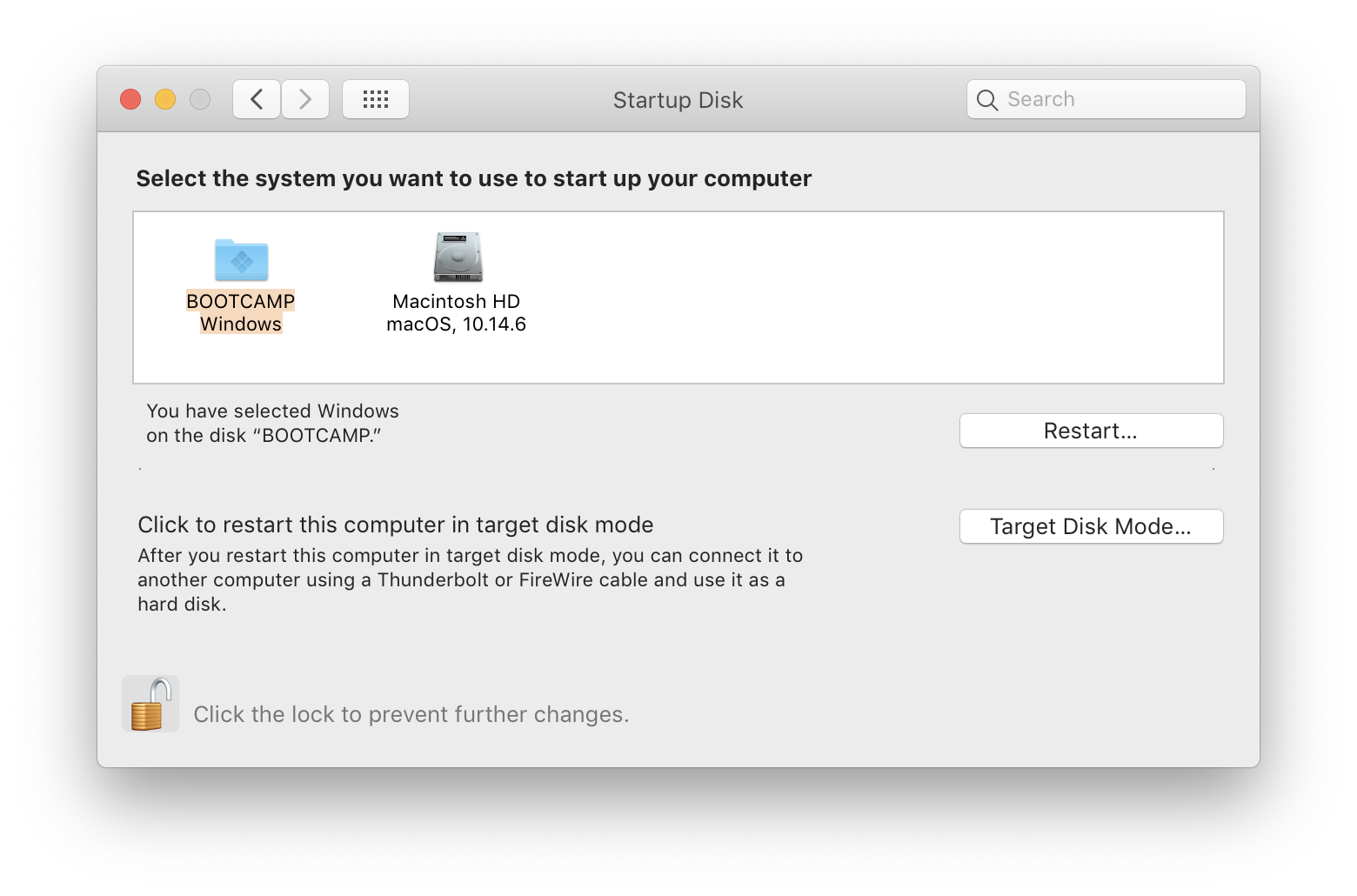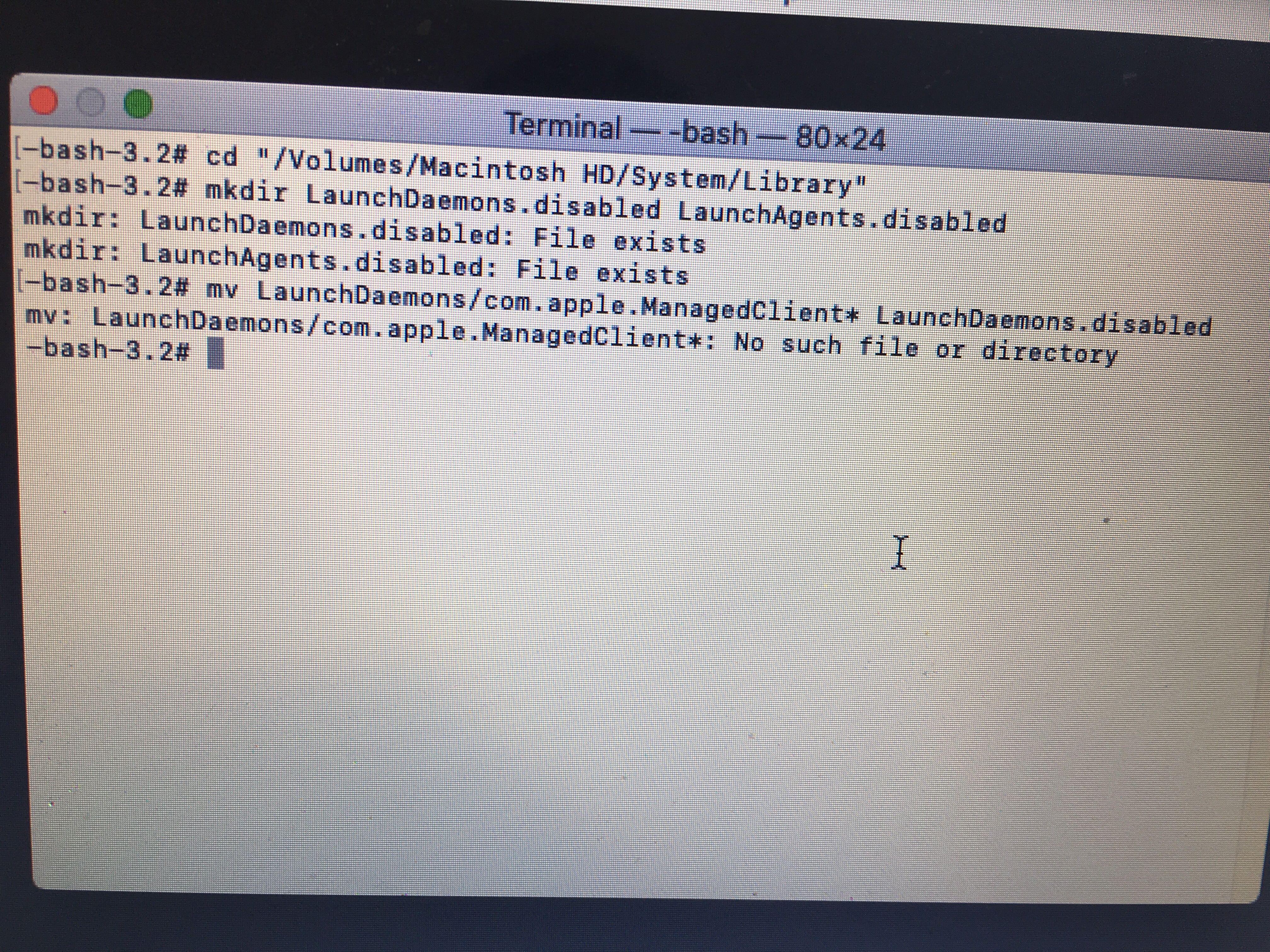Folder Mode Bless Boot Dmg
To boot into recovery mode, power your system on and simply hold Command + R until the system enters recovery mode. Once in recovery mode, you’ll then need to navigate to the new EFI partition and bless the drive. To do so, navigate to Utilities and then Terminal. Open Disk Utility in the Utilities' folder. After Disk Utility loads select the drive (out-dented entry with the mfg.' S ID and size) from the side list. Click on the Erase tab in the Disk Utility toolbar. Name the drive, 'MyVolume'. This is what I needed to do. It was bootable from my more recent macbook pro but not from my 2012 macbook air. After repartitioning and setting up the drive again, I could boot to it by choosing a boot drive from inside disk utility in recovery mode. (holding option key wasn't working for me) – Ryan Silva Oct 19 '17 at 23:37.
- Folder Mode Bless Boot Dmg Download
- Folder Mode Bless Boot Dmg Windows 7
- Folder Mode Bless Boot Dmg Chrome
- Folder Mode Bless Boot Dmg Software
- Folder Mode Bless Boot Dmg Mac
Forensicswiki.org has moved to this site, forensicswiki.xyz. For information, please join the Google Group forensicswiki-reborn
Please help to improve this article by expanding it. |
Apple Inc.'s Macintosh OS X (pronounced 'OS Ten') is the operating system distributed with Apple computers. It includes heavily used several programs by default, including Apple Mail, a web browser called Safari, and an Apple Address Book, and iCal.
- 16Also see
- 17External Links
EFI boot
The firmware is responsible for initializing the hardware and performing a POST (Power-On Self Test).
The default boot volume is stored in NVRAM and can be configured through the 'Startup Disk' preference pane or the nvram command line utility [1]. E.g. to print all of the firmware variables.
Additional boot arguments can be provided via the 'boot-args' value [2].
Mac OS X extends EFI with a read-only HFS+ driver. According to [3] HFS+ volume header fields are used to point to a 'blessed file' to be loaded as an EFI application. Though it is not clear which header field the source is referring to but likely related to the 'bless' utility [4].
The firmware starts the Mac OS X boot loader (boot.efi). The bootloader displays a dark grey Apple logo on the screen and loads the Darwin kernel from disk, as well as the essential driver extensions.
The bootloader can be eithe a MZ-PE/COFF or EFI fat binary type executables and is commonly stored in:
The behavior of the bootloader can be configured in the com.apple.Boot.plist [5] which can be found in:
Disk image types
Folder Mode Bless Boot Dmg Download
Mac OS X has support for various disk image types build-in, some of which are:
- read-write disk image (.dmg) some of which use the Raw Image Format
Burn Folder
Mac OS X Burn Folder:
Folder Mode Bless Boot Dmg Windows 7
This folder normally contains alias files (similar to LNK files under Windows). Which should have the following signature.
These alias files contain additional date and time values.
Also check the following files for references to deleted .fpbf paths:
Actual burning of optical media is logged in:
HFS/HFS+ date and time values

In HFS+ date and time values are stored in an unsigned 32-bit integer containing the number of seconds since January 1, 1904 at 00:00:00 (midnight) UTC (GMT). This is slightly different from HFS where the date and time value are stored using the local time. The maximum representable date is February 6, 2040 at 06:28:15 UTC (GMT). The date values do not account for leap seconds. They do include a leap day in every year that is evenly divisible by four. This is sufficient given that the range of representable dates does not contain 1900 or 2100, neither of which have leap days. Also see: Technical Note TN1150 - HFS Plus Volume Format
Converting HFS/HFS+ date and time values with Python:
Launch Agents
System-wide:
Per user:

These directories contain Property list (plist) files.
Launch Daemons
System-wide:
These directories contain Property list (plist) files.
Startup Items
Crash Reporter
Contains text files named .crash, .diag, .spin
Diagnostic Reports
Internet Plug-Ins
System-wide:
Per user:
Quarantine event database
See [6]
Snow Leopard and earlier
Lion and later
sleepimage
This file is similar to the hibernation file on Windows.
Also see: [7]
Last shutdown logs
Package Files (.PKG)
Package Files (.PKG) are XAR archives [8] that contain a cpio archive and metadata [9].
Codepages
Mac OS X typically uses UTF-16 big-endian to store Unicode strings, it also defines several codepages [10] that can be used to store ASCII strings.
Note that some of these codepages can differ for different versions of Mac OS.
| Codepage | Identifier | Description |
|---|---|---|
| 0 | MacRoman | Encoding used for English and several other Western languages, also see: Wikipedia: Mac OS Roman,Unicode.org: ROMAN.TXT (sometimes referred to as Microsoft codepage 10000 though it is unclear if this is the pre Mac OS 8.5 MacRoman variant) |
| 1 | MacJapanese | also see: Unicode.org: JAPANESE.TXT (sometimes referred to as Mac Shift Jis or Microsoft codepage 10001) |
| 2 | MacChineseTrad | also see: Unicode.org: CHINTRAD.TXT (sometimes referred to as Mac Big5 or Microsoft codepage 10002) |
| 3 | MacKorean | also see: Unicode.org: KOREAN.TXT (sometimes referred to as Mac Hangul or Microsoft codepage 10003) |
| 4 | MacArabic | Encoding used for Arabic texts, also see: Wikipedia: MacArabic encoding, Unicode.org: ARABIC.TXT (sometimes referred to as Microsoft codepage 10004). Note that certain Unicode characters can be translated into multiple codepage characters such as U+0020 can be represented as 0x20 or 0xa0. |
| 5 | MacHebrew | also see: Unicode.org: HEBREW.TXT (sometimes referred to as Microsoft codepage 10005) |
| 6 | MacGreek | Encoding used for Greek scripts, Wikipedia: MacGreek encoding, Unicode.org: GREEK.TXT (sometimes referred to as Microsoft codepage 10006) |
| 7 | MacCyrillic | Encoding used for Cyrillic scripts, also see: Wikipedia: Mac OS Cyrillic encoding, Unicode.org: CYRILIC.TXT. Note that MacCyrillic supersedes the MacCyrillic encoding prior to Mac OS 9.0 (sometimes referred to as MacCyrillicCurrSignStdVariant, MacRussian or Microsoft codepage 10007) and MacUkrainian, Unicode.org: UKRAINE.TXT (sometimes referred to as MacCyrillicCurrSignUkrVariant or Microsoft codepage 10017). |
| 9 | MacDevanagari | also see: Unicode.org: DEVANAGA.TXT |
| 10 | MacGurmukhi | also see: Unicode.org: GURMUKHI.TXT |
| 11 | MacGujarati | also see: Unicode.org: GUJARATI.TXT |
| 12 | MacOriya | |
| 13 | MacBengali | |
| 14 | MacTamil | |
| 15 | MacTelugu | |
| 16 | MacKannada | |
| 17 | MacMalayalam | |
| 18 | MacSinhalese | |
| 19 | MacBurmese | |
| 20 | MacKhmer | |
| 21 | MacThai | also see: Wikipedia: ISO/IEC 8859-11 - Mac OS Thai, Unicode.org: THAI.TXT (sometimes referred to as Microsoft codepage 10021) |
| 22 | MacLaotian | |
| 23 | MacGeorgian | |
| 24 | MacArmenian | |
| 25 | MacChineseSimp | also see: Unicode.org: CHINSIMP.TXT (sometimes referred to as Mac GB2312 or Microsoft codepage 10008) |
| 26 | MacTibetan | |
| 27 | MacMongolian | |
| 28 | MacEthiopic | |
| 29 | MacCentralEurRoman | Encoding used for languages that use the Latin script, such as Central European and Southeastern European languages, also see: Wikipedia: Mac OS Central European encoding, Unicode.org: CENTEURO.TXT (sometimes referred to as Mac East Europe or Microsoft codepage 10029) |
| 30 | MacVietnamese | |
| 31 | MacExtArabic | |
| 33 | MacSymbol | also see: Unicode.org: SYMBOL.TXT |
| 34 | MacDingbats | also see: Wikipedia: Zapf Dingbats, Unicode.org: DINGBATS.TXT |
| 35 | MacTurkish | also see: Wikipedia: Mac OS Turkish encoding, Unicode.org: TURKISH.TXT (sometimes referred to as Microsoft codepage 10081) |
| 36 | MacCroatian | also see: Wikipedia: Mac OS Croatian encoding,Unicode.org: CROATIAN.TXT (sometimes referred to as Microsoft codepage 10082) |
| 37 | MacIcelandic | also see: Wikipedia: Mac OS Icelandic encoding, Unicode.org: ICELAND.TXT (sometimes referred to as Microsoft codepage 10079) |
| 38 | MacRomanian | also see: Wikipedia: Mac OS Romanian encoding,Unicode.org: ROMANIAN.TXT (sometimes referred to as Microsoft codepage 10010) |
| 39 | MacCeltic | also see: Unicode.org: CELTIC.TXT |
| 40 | MacGaelic | also see: Unicode.org: GAELIC.TXT |
| 140 | MacFarsi | also see: Wikipedia: MacFarsi encoding, Unicode.org: FARSI.TXT |
| 152 | MacUkrainian | see: MacCyrillic |
| 236 | MacInuit | also see: Unicode.org: INUIT.TXT |
| 252 | MacVT100 | |
| 255 | MacHFS | |
| 2564 | MacRomanLatin1 |
Also see
Formats
External Links
- Inside Macintosh, by Apple Computer, Inc., 1993
- What is Mac OS X?, by Amit Singh, 1994
- Mac OS X Forensics, by Joaquin Moreno Garijo, March 4, 2015
- Hidden backdoor API to root privileges in Apple OS X, by Emil Kvarnhammar, April 9, 2015
- Max OS X Internals book (1st ed) by Jonathan Levin PDF download
Alias
- Reversing Mac Alias v3 Data Objects, by Patrick Olsen, August 15, 2016
Apple Examiner
- Macintosh Forensics - A Guide for the Forensically Sound Examination of a Macintosh Computer by Ryan R. Kubasiak
EFI
- The Intel Mac boot process, by the rEFIt project
- Carving up EFI fat binaries, by snare, February 24, 2012
iCloud
ColorSync
- ICC.1:2004-10 - Image technology colour management - Architecture, profile format, and data structure, by International Color Consortium (ICC)
- ICC Profile Format Specification, by International Color Consortium (ICC), November 20, 1995
DMG

HFS
- Mac Forensics: Mac OS X and the HFS+ File System by P. Craiger
Quarantine event database
Unified logging
- New macOS Sierra (10.12) Forensic Artifacts – Introducing Unified Logging, by Sarah Edwards, November 13, 2016
- Accessing Unified Logs From an Image, by BlackBag Technologies, Inc., Sepember 22, 2017
Folder Mode Bless Boot Dmg Chrome
Yet Another Assembler (YAA)
Folder Mode Bless Boot Dmg Software
- YAA: An Obscure MacOS Compressed File Format, by nightwatchcyber, June 14, 2020